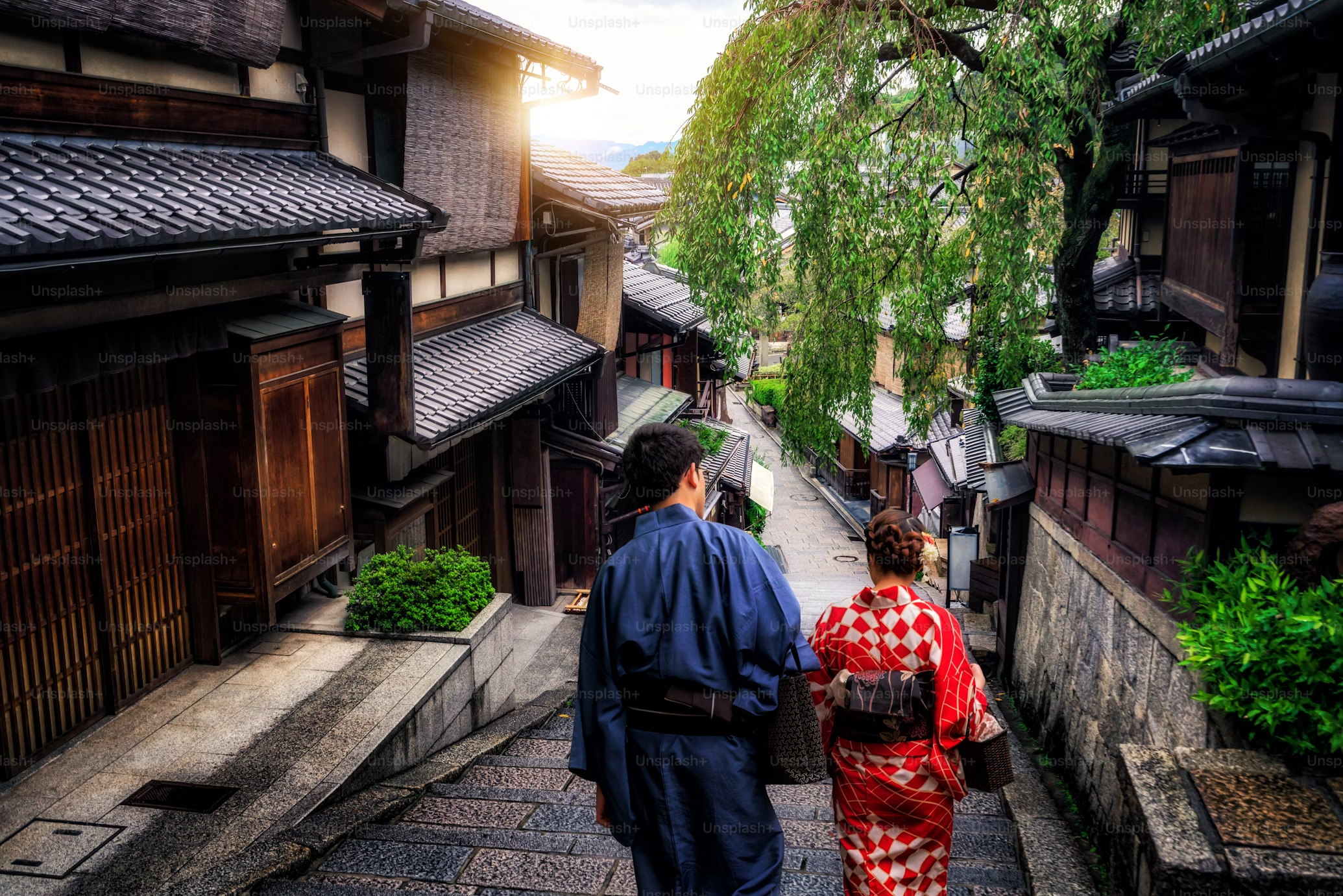Day 1
Cultured Dressing
The traditional dress of Japan is the kimono. Kimonos, which are generally made of silk, have large sleeves and reach from the shoulders all the way down to the heels. They are tied with a wide belt called an obi. Kimonos are now usually worn only on special occasions, such as the Shichi-Go-San festival, weddings, and graduation ceremonies.
Compared to Western dress, the kimono tends to limit one's movement, and it takes more time to put on properly. In the summer, however, a more easily worn, lightweight informal kimono known as a yukata is worn by children and young adults at festivals, fireworks displays, and other special occasions. In everyday life, though, young people tend to prefer clothing that is easier to move around in, like T-shirts, jeans, polo shirts, and sweat suits.

Japan's countryside is a treasure trove of natural beauty, rich culture, and serene landscapes:
- Rolling hills and mountains: Japan's countryside is home to lush green hills, majestic mountains, and picturesque villages.
- - Festivals and traditions: Experience vibrant festivals, such as the Cherry Blossom Festival, and discover traditional crafts, like pottery and weaving.
- - Rice fields and farmland: The countryside is dotted with rice fields, orchards, and farmland, showcasing Japan's agricultural heritage.
- - Traditional villages: Visit ancient villages like Shirakawai, Gokayama, and Miyama, with their traditional thatched-roof houses and rustic charm.
- - Scenic coastlines: Japan's countryside also features stunning coastlines, such as the Japan Sea and the Pacific Ocean, offering breathtaking views and fresh seafood.
- - Hot springs and onsen: Relax in natural hot springs and onsen (hot spring resorts) nestled in the countryside, perfect for rejuvenation.
These are just a few aspects of Japan's captivating countryside.
Days to spend... Home | 2 | 3 |

